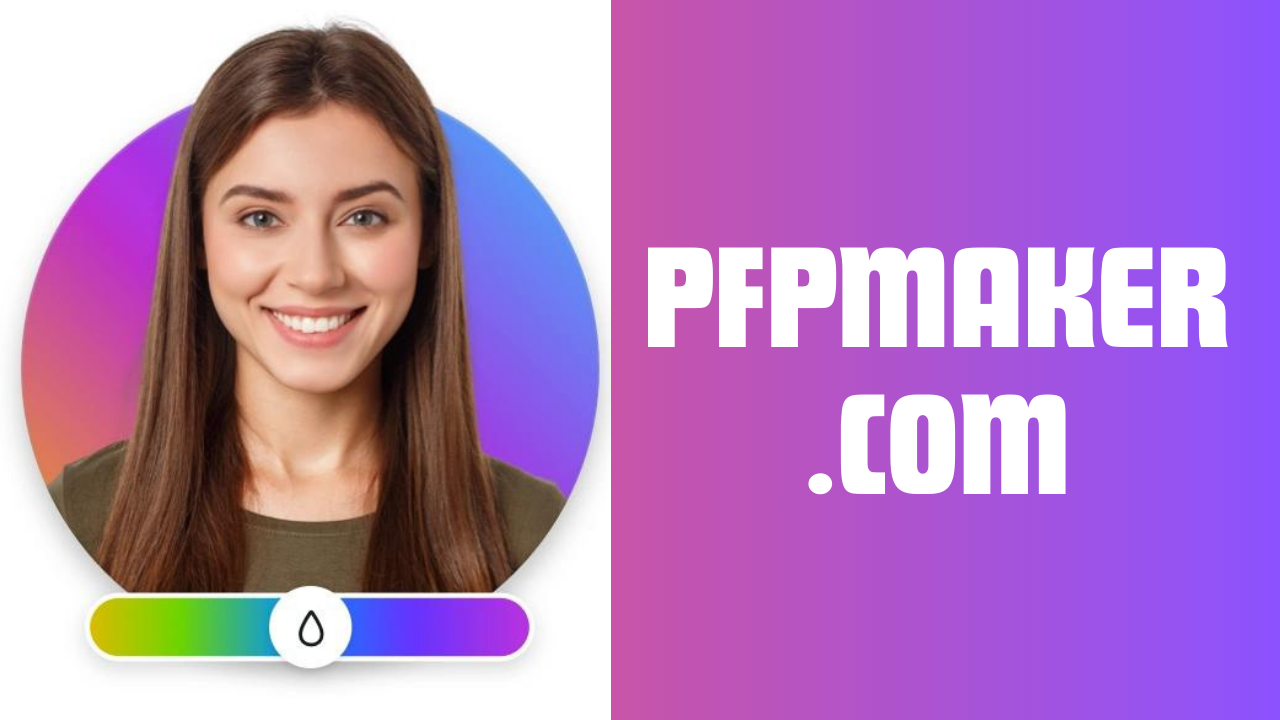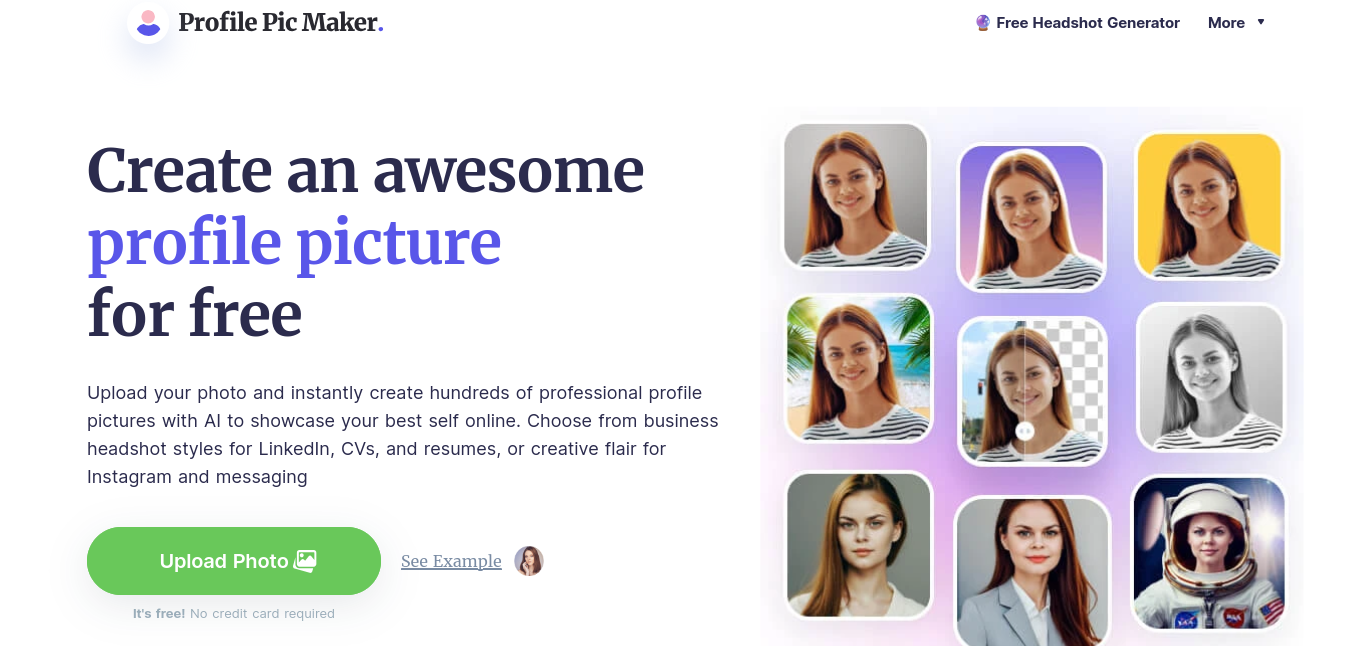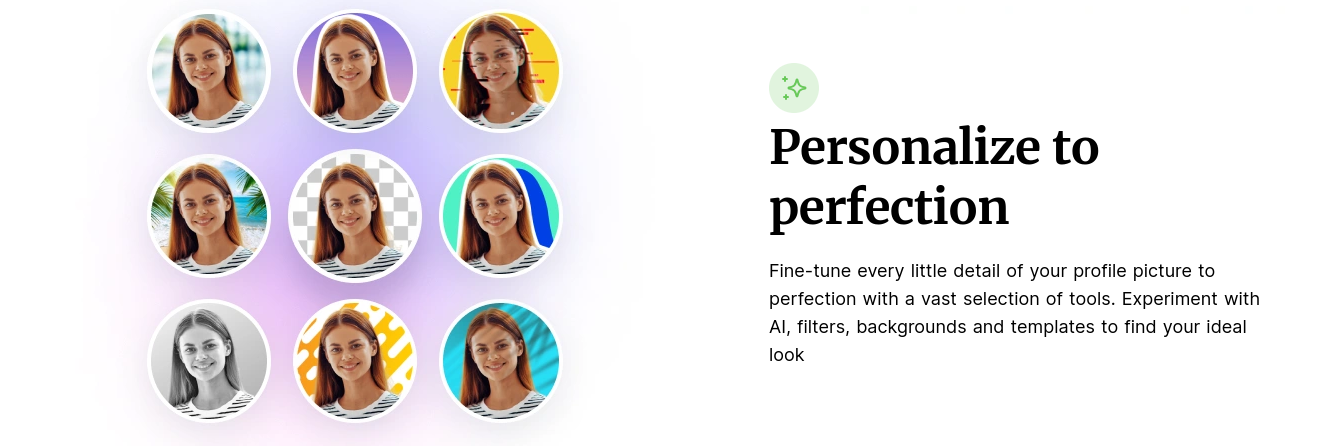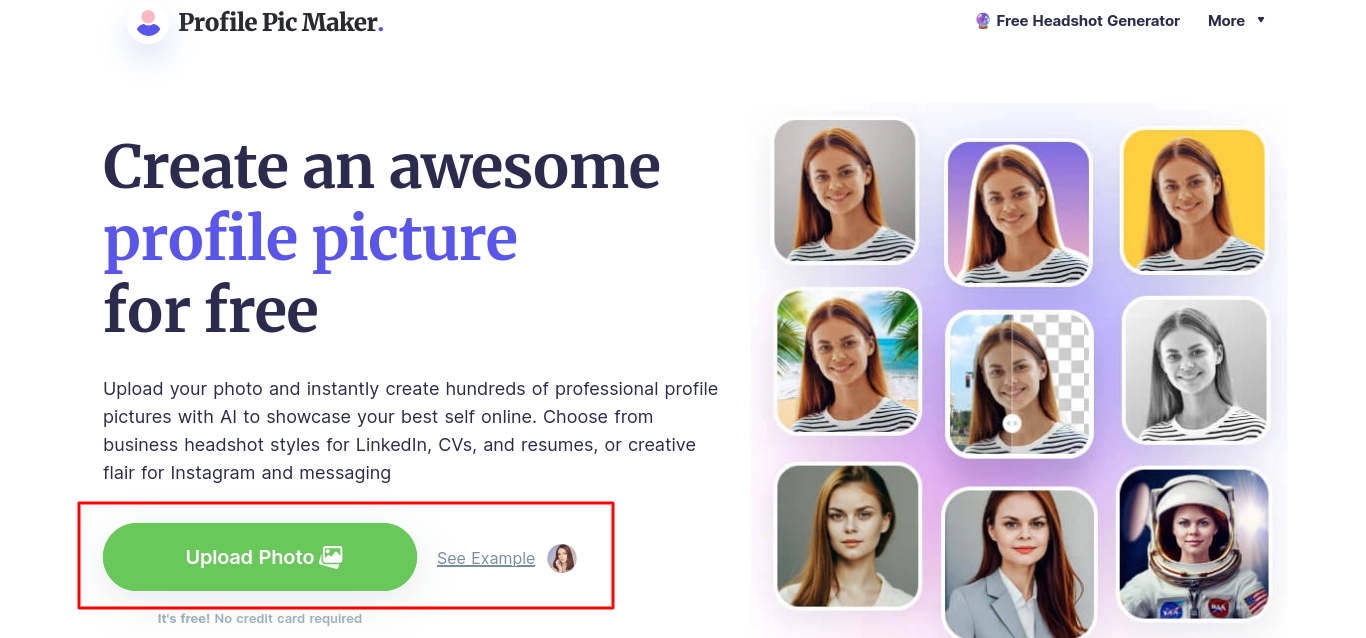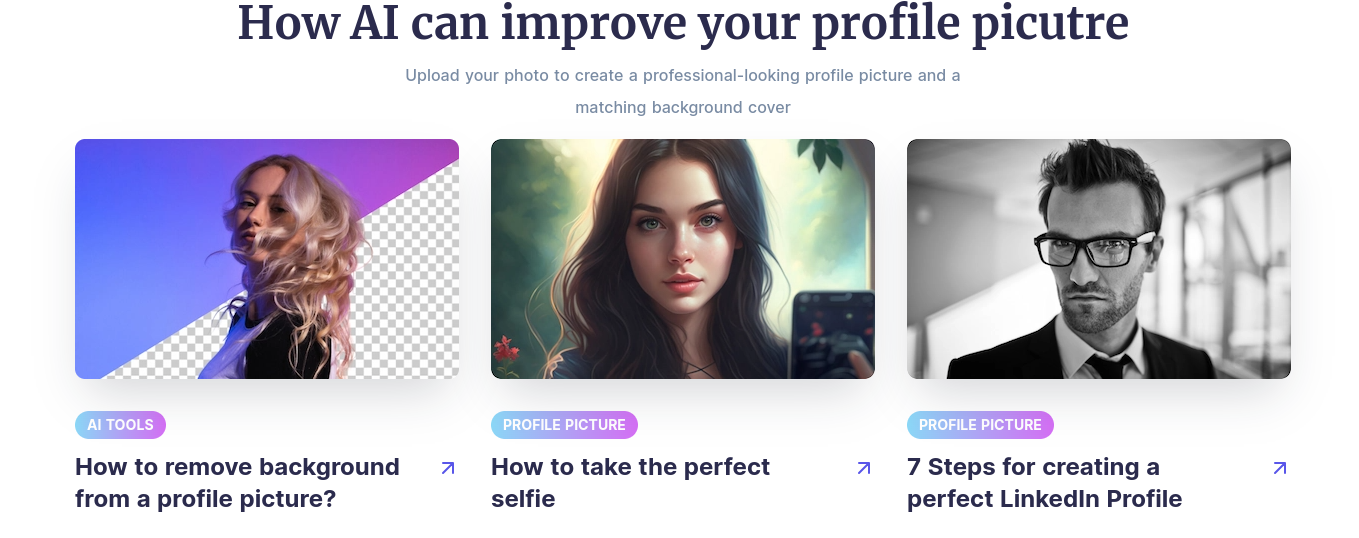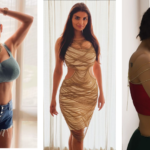An In-Depth Overview of PFPMaker.com
- 1 History of the PFPMaker.Com
- 2 PFP Design Tips
- 3 How to Join PFPMaker.Com:
- 4 PFPMaker’s Factors
- 4.1 AI-Powered Editing Tools
- 4.2 Extensive Customization Options
- 4.3 User-Friendly Interface
- 4.4 Free and Paid Plans
- 4.5 The Good and Bad of PFPMaker
- 5 Is PFPMaker Right for You?
- 6 Some Alternatives –
- 6.1 PhotoDirector:
- 6.2 Canva:
- 7 PFP Profile Pictures FAQs
In Shorts:
- Users may create personalized and professional profile images with the aid of PFPMaker.com. Its easy-to-use interface and excellent output have gained popularity.
- Like any instrument, you must be aware of its advantages and disadvantages.
- Having a distinctive profile picture is crucial in the era of online first impressions.
- This need is satisfied by PFPMaker.com, which creates distinctive profile photos quickly and easily.
PFPMaker.Com stands for “profile picture.” It refers to the photo or image representing you across online platforms and social media. Your PFP appears next to your username and is one of the first things people notice about your online presence. Choosing an appropriate and appealing PFP is essential for making an excellent first impression and presenting your brand. Social media is a big part of everyday life, so your profile picture has become your digital identity.
History of the PFPMaker.Com
PFPMaker.Com originated from passport photos, which were used to identify individuals. When online communication emerged, there was a need to represent oneself visually on platforms like email, forums, and early social networks. The profile picture as we know it today evolved with the rise of social media in the 2000s. Platforms like Facebook, Twitter, and LinkedIn required and popularized having a profile photo. It allowed for self-expression and personalization in the digital space. Over time, people began carefully curating PFPs to convey their personality and interests. Today, changing your profile picture is seen as a milestone life event or a way to raise awareness. The PFP is now deeply ingrained in internet culture.
Types of PFPMaker.Com
There are a few main categories of profile pictures:
- Personal – For your own social media accounts to showcase your personality. Usually, a headshot or full body photo.
- Professional – For LinkedIn, company websites, and other business uses. Typically, a professional headshot depicts credibility.
- Brand/Organization – To build recognition for brands, companies, or organizations. Uses a logo, product image, or graphic.
- Anonymous – To remain private. Uses an avatar, cartoon, animal, or other nonspecific image.
- Cause – To support social/political causes. Uses relevant logos, symbols, or imagery.
- They are coordinated – To show affiliation. Groups will coordinate matching PFPs.
- Memorable – Uses a funny, unique, or distinctive photo to stand out.
- Temporal – Changes temporarily for holidays, events, and trends.
How PFPMaker.Com Works?
PFPMaker is easy to use. Submit a photo to pfpmaker.com. They may then use various editing tools to improve your profile photo. Remove backgrounds, change colours, and apply AI filters. PFPMaker.COM covers you. A few clicks may turn ordinary images into spectacular profile photos that create a lasting impact.
Creating a Good PFPMaker.Com
If you don’t have a suitable profile photo, follow these tips for taking your own:
- Use a clean background. A solid wall, fabric, or nature backdrop works.
- Use flattering lighting. Outdoor shade, window light, or a ring light are great options.
- Position the camera around eye level. Angle down slightly to avoid unflattering views up your nose.
- Take photos in portrait orientation. Horizontal frames won’t work for most PFP contexts.
- Use a timer or remote so you’re not holding the camera. Posing naturally works best.
- Take a lot of shots and review them carefully. Zoom and crop to frame the best facial expression.
- If needed, edit photos by cropping, applying light filters, removing blemishes, etc.
- Ask a friend to take candid shots if you have trouble posing naturally.
- Consider using a professional photographer for a photo shoot to get high-quality shots.
PFP Design Tips
If creating an illustrated or graphic PFP, apply these design principles:
- Maintain simplicity. Avoid cluttered or complex designs.
- Use bold, obvious colours. Dark palettes don’t work well at small PFP sizes.
- Incorporate minimal text. Username handles take care of identification.
- Vector formats like SVG scale better than JPG/PNG. There is no pixelation when enlarged.
- Submit images at the recommended dimensions. Most platforms specify profile photo sizes.
- Centre focal elements. Keep key visuals near the middle where they’ll be seen.
- Add branding elements if appropriate. Company logos, mascots, etc.
- Maintain consistency. Reuse key elements across different platform PFPs.
- Convey personality. Express yourself while fitting the platform’s culture.
- Consider shapes and negative space. Circles, clever cutouts, etc., can make unique designs.
- Check legibility. Text and details need to be clear at reduced sizes.
PFPMaker definition is often asked. Free AI tool PFPMaker creates excellent profile photos. Upload a few photographs of yourself to produce over 100 designs. PFPMaker may create a traditional, contemporary, or futuristic design. Ideal for professionals, freelancers, and social media enthusiasts. Instead of a generic profile photo, use PFPMaker to express your flair. Try it now to stand out online!
Note: PFPMaker is a fantastic online tool for creating social networking, gaming, and dating profile images. It removes backgrounds from images using sophisticated technology so you can focus on yourself.
How to Join PFPMaker.Com:
- Visit PFPMaker.com.
- Click “Create your creative PFP”.Upload your photo, logo, or custom artwork.
- Allow AI to eliminate backgrounds and build profile pictures.
- Choose and customize your favourite design.
- Get the backdrop cover and profile photo that match.
- After joining up, add a picture or custom image.
- Wait for AI backdrop removal.
- Your profile image designs are produced.
- Pick your favourite.
- Colors, shadows, and other parameters are customizable.
- New profile photo and wallpaper cover download.
Is PFPMaker.com the Go-To for Profile Pictures?
PFPMaker.com has become a popular platform for creating professional profile pictures. With its AI-powered tools and promise of high-quality results, PFPMaker seems like an appealing option for anyone wanting to spruce up their profile photo. But does it deliver on its promises? Read on to know more.
PFPMaker’s Factors
PFPMaker provides an array of features to help users customize stylish profile pics.
Some key highlights include:
AI-Powered Editing Tools
PFPMaker employs AI to assist users in refining their photos. The AI Portrait Editor allows customizing lighting, colour, and other enhancements. The Background Remover uses AI to detect and replace backgrounds automatically.
Extensive Customization Options
Users can fine-tune details like facial features, expressions, poses, outfits, backgrounds, etc. There are also many overlays and textures to choose from.
User-Friendly Interface
PFPMaker aimed to make profile picture creation efficient with its intuitive interface. Users can complete the editing process in minutes.
Free and Paid Plans
PFPMaker offers a basic free version, paid plans, unlocking more features, higher resolution downloads, and expanded image packages.
The Good and Bad of PFPMaker
PFPMaker has amassed many happy customers, but it also has some downsides that users should be aware of
| PROS | CONS |
| Agile editing with quick turnaround | Restricted features on the free version |
| High-quality AI enhancements | Questions about output image quality |
| Many design possibilities for customizable outputs | |
| Large template selection for various profile pics | |
| Positive reputation from 10+ million users |
Is PFPMaker Right for You?
PFPMaker delivers on its promise of fast, customizable profile pictures. But aspects like its free plan limitations and quality concerns are worth weighing. PFPMaker hits the sweet spot for many users—professional results with easy AI-aided editing. But one’s needs and priorities determine whether it’s the ideal profile picture solution or another option. Putting PFPMaker to the test for yourself is the best way to decide if its pros outweigh any cons for your goals. With the tool’s efficient editing process, it’s easy to give it a spin. However, analyzing competitors is prudent to determine the best fit. In the profile picture arena, PFPMaker certainly shows promise. Yet only by matching its capabilities against your specific wants can you determine if it genuinely delivers
Some Alternatives –
PFPMaker faces stiff competition from sites like PhotoDirector and Canva.
Here’s how they stack up:
PhotoDirector:
Advanced Editing Tools: PhotoDirector is known for its robust editing tools. These tools often include features like layers, advanced colour correction, masking, and more. These functionalities cater to professional photographers and advanced users who require intricate adjustments and precise control over their edits.
Steep Learning Curve: Due to its advanced features and capabilities, PhotoDirector typically has a steeper learning curve than essential editing apps. Users may need to invest more time learning how to navigate the interface and utilize the various tools effectively. However, for those willing to put in the effort, PhotoDirector can provide extensive editing capabilities and professional-quality results.
Canva:
Templates Galore: Canva is renowned for its extensive collection of templates across various categories, including social media graphics, presentations, posters, and more. These templates serve as starting points for users who may not have design experience or prefer a quick and easy way to create visually appealing content.
Less Control over Customizations: While Canva offers a wide range of customization options within its templates, users may find themselves somewhat limited in granular control over design elements compared to more advanced design software. This limitation is balanced by the ease of use and accessibility that Canva provides, making it a popular choice for individuals and businesses looking to create polished designs without extensive design expertise.
PFP Profile Pictures FAQs
Why is my PFP so small on some platforms?
Platforms size down PFPs so they take up less page real estate. Smaller file sizes also load faster. The image renders sharply when clicked.
Can I use artwork or branding as a PFP?
Yes, illustrations, logos, and other graphics can make for effective profile pictures in business and personal contexts.
What PFP size does LinkedIn recommend?
LinkedIn recommends an image of at least 400×400 pixels for optimal quality. Some other social platforms want square images of 200×200 or 300×300 pixels.
Can I use emojis in my profile picture?
Most platforms allow emojis to be incorporated into PFPs. They are commonly used creatively for anonymous accounts or to convey different moods.
Is having no profile photo bad?
It’s generally better to upload some photos over having a default blank or avatar image. However, some people prefer no PFP for privacy reasons.
Should I include other people in my profile photo?
Solo shots are better for clear identification. If including others, use tight crops or positioning to ensure you remain the focus.

